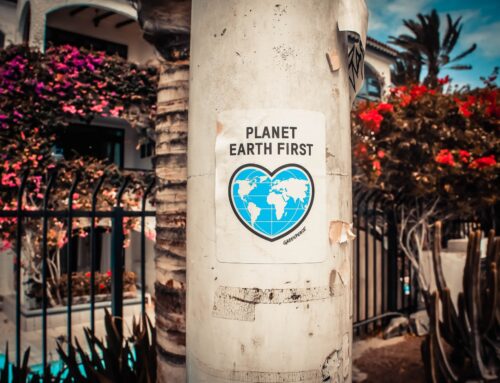The Current US Electricity Mix and a Forecast of the Future
The summer of 2021 is a turning point in the transition to renewable energy. Portland has posted a shockingly new high temperature of 116 degrees, and Oregon is on the cusp of new renewable energy legislation. The west is ablaze with unstoppable forest fires and endless drought. On the bright side, solar energy is consistently in the news as a remedy to global warming, and President Biden has new renewable programs to re-power the nation!
Current Renewable Energy Legislation
The Renewable Portfolio Standard (RPS) has been a leading driver of renewable energy by individual states. For each state that adopts them, an RPS requires major utilities to procure various percentages of renewable energy in their energy supply portfolios by different time periods, some more or less aggressively targeted. There are currently 38 states plus the District of Columbia with RPS. The following chart sites some of the most meaningful RPS laws:
| Current Renewable Portfolio Standard Laws* | |||||
|
2030 |
2032 | 2035 | 2040 |
2045 |
|
| California |
60% |
100% |
|||
| New York |
70% |
100% | |||
| Washington DC | 100% | ||||
| Oregon ** |
80% |
90% | 100% | ||
*Source National Conference of State Legislatures
**Currently pending Oregon Governor, Kate Brown’s signature.
With most states adopting an RPS, and many adopting a 100% RPS, we begin to see state legislated forecasts on how long it will take for major US utilities to adapt to 100% renewable electricity. In more liberal states, current legislation mandates 100% renewable power by 2040-2045. However, these dates are only projections about what seems possible. In reality, states have been hitting their RPS mandates much sooner than required due to technological advances, economic realities, and government programs, etc.
Climate change is actively disrupting our lives, and the economics of renewable energy are constantly improving. With the transition to renewable energy accelerating, states will be achieving 100% renewable much sooner than current RPS’s suggest.
State Progress
At one point in April 2021, California renewable energy sources powered 95% of its grid! On a more typical day (as of this writing), renewables power closer to 50% of the California grid. Since most of its renewable energy was built in the last ten years, it is obvious that California will be reaching its 100% RPS much sooner than 2045. I estimate California utilities will be 99% renewable closer to 2030 based on its recent progress and the projects that are currently underway.
As of October 2020, renewable sources powered 28% of The State of New York. It is approximately eight years ahead of its RPS mandate. Other states are reaching their RPS mandates ahead of schedule too. Again, when looking at an RPS, it’s important to view it as what the state thinks is possible at the time the legislation is adopted, not what it will achieve after factoring in new programs and in the increasing threat of climate change. Just think what RPS law might go into effect if the majority of California’s reservoirs run completely dry? Or if a forest fire runs through Portland, Sacramento, and Los Angeles, all at the same time? Or if suddenly there’s a new Class 6 Hurricane bearing down on New Orleans?
National Progress
In the meantime, President Biden is calling for a carbon-free power sector by 2035. This intention is taken from his campaign website: “Power Sector: Move ambitiously to generate clean, American-made electricity to achieve a carbon pollution-free power sector by 2035. This will enable us to meet the existential threat of climate change while creating millions of jobs with a choice to join a union.” I completely agree with him that this is entirely possible, reasonable, and likely to happen. Climate change is accelerating, and it is high time to adopt an aggressive national clean energy policy. I am eagerly awaiting the legislation that this intention will produce.
The Future
The US energy portfolio is rapidly changing.
The following chart is of actual data through 2020 from the US Energy Information Administration, Short-Term Energy Outlook, July 2021. Data beyond 2021 is my projection. Just look at the curves already in progress!
Coal: Coal has been phasing out for the last ten years. If the current closure rates continue, it will cease production by 2028.
Natural Gas: Natural Gas will be with us for a while longer as it is still 22% of new electric capacity being built (behind wind 44% and Solar 32%). Natural gas plants have the ability to start and stop quickly which gives utilities more control over the timing of their electricity production without the large-scale use of batteries. The ability to serve as peaker plants* will keep it in the energy mix until full phase-out in 2035.
*Energy plants that only run at peak energy demand on the grid, usually in the late afternoon.
Nuclear: Nuclear power will continue to be steady for many years. It may not increase production due to the high cost, and public concerns about its safety and waste management.
Hydro: Hydropower will continue with a slow decrease over time as dams are decommissioned and/or lose production capacity due to lower reservoir water levels. New dams are not likely to be built as environmental laws have become more stringent, and droughts have caused dams to lose generation capacity. Dams have had a lot of staying power with their high capital costs, and ability to adjust electricity production on an hourly basis. Wind and solar power are proving to be less environmentally damaging and more cost-effective.
Renewables: Most notably wind and solar power have been on the rise and will continue to replace all other forms of electricity generation due to lower costs and improved technology. Utility-scale battery systems are solving the production intermittency problem that has dogged these renewable energy sources for years. Wind and solar are currently phasing out coal and will absorb natural gas production in time as battery technology improves. Batteries will eventually turn the tide to help drive out natural gas as it loses its edge of being able to generate electricity on demand.
New Electricity Sources:
It is likely that new renewable energy sources will join the ranks of Wind, Solar, and Geothermal in the next ten years. It is difficult to say whether nuclear fusion, space-based solar power, tidal power, magma power, or some other new technology will be the one to gain traction in the market. Being renewable is one of the hallmarks of future energy sources, and it only bolsters my forecast that renewables will generate nearly all of our electricity by 2035.
Let’s do more than just hope others will act soon enough to avoid further climate disasters. Let’s do everything in our power to speed up the transition to 100% renewable energy!







Great article John.